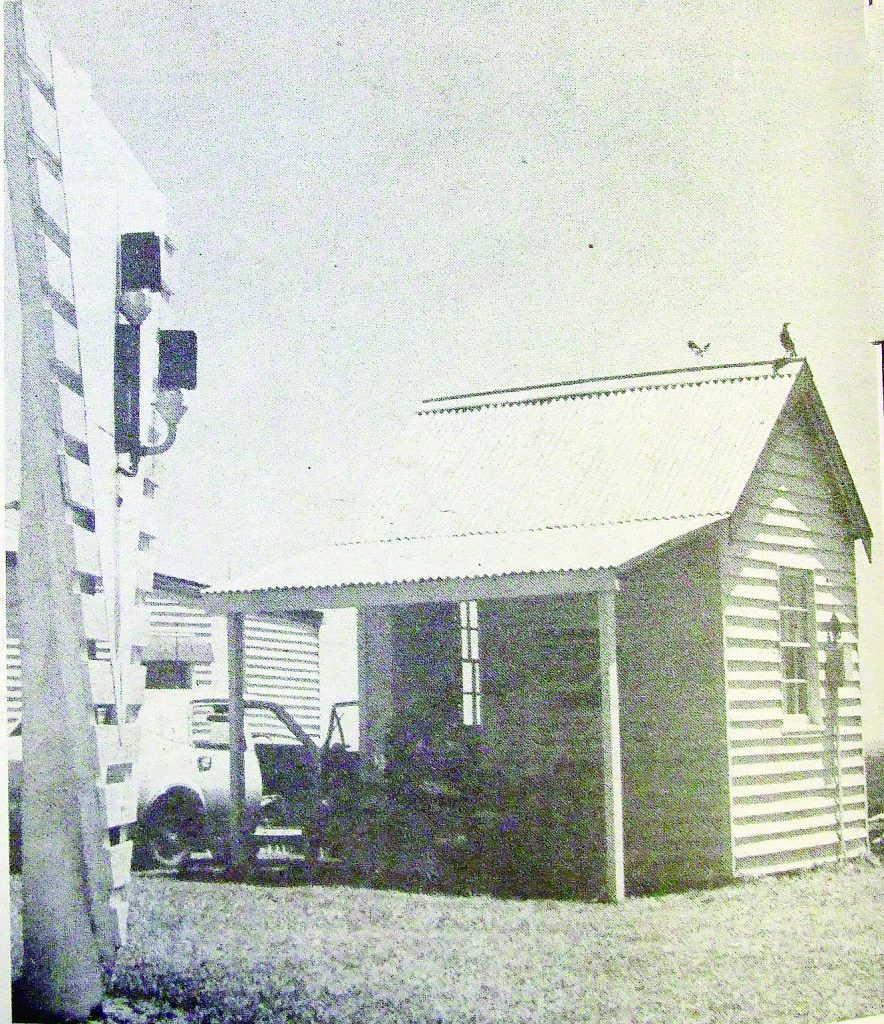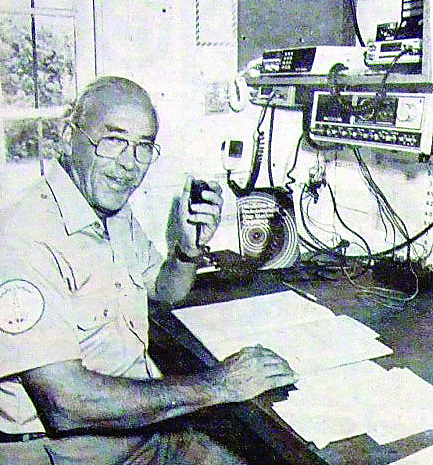Citizens Radio Emergency Service Teams (CREST) organisation was set up in the 1970s to maintain a voluntary two-way radio service to help people in danger and to co-operate with recognised government services, such as police, fire and SES, in the event of emergencies. At the time, approximately every fourth vehicle on the highway had a C.B. radio as well as marine boats and all of these were equipped with an emergency channel.

The service was established in Grafton in 1978 with Mike Austin as Operations Director. Yamba was a post under the control of the Grafton division, but a concerted membership drive allowed it to form a separate division under its own control in June 1979. The first Post had Errol and Noelene Thorne as Post Monitors. The first executive was Operations Director, Errol Thorne; Training Officer, Neil Newman; Secretary Noeline Thorne; Treasurer Bob Carr; Public Relations Officer, Trevor Phillips; Technical Adviser, Paul Harris and Social Secretary, Evelyn Longton.
Errol Thorne
In 1979, Keith Murray wrote to the Yamba Urban Area Committee suggesting a museum of local data and machinery be established in the old golf clubhouse in River Street, The Yamba Chamber of Commerce backed the project and Story House (a name suggested by Keith) was opened to the public for the first time on 08 October 1976, However, by 1980, the museum was foundering as not enough volunteers could be found to staff it adequately. In October, Errol Thorne, on behalf of CREST, advised that the group would be taking over the operation of Story House as a three-fold community service by expanding the museum idea, opening as much needed tourist information centre and using the building as a base for CREST. The golf club donated the building to CREST on the understanding the latter would be responsible for any repairs and relocation off golf club land.
The Port of Yamba Historical Society was formed on 20 September 1981 and the committee, with Jean Bultitude as president, took over the running of the history side of the setup.
In 1981, a Royal Volunteer Coastal Patrol base was established in conjunction with the local CREST monitoring service. CREST had already played an important part in a number of rescues at sea near Yamba and further afield, proving itself as a lively and go-ahead organisation.
CREST was entirely voluntary and supported itself by fees from members, running street stalls and donations from the public.

By 1982, there were 23 members and the premises were found to be inadequate, with space being a big problem. Don Day, Member for Clarence made representations to LJ Ferguson, the deputy Premier and Minister Public Works and Ports, which resulted in the Maritime Services Board allowing use of the old signals hut on Pilot Hill. This was an ideal position as
Signals hut in foreground in 1985 it overlooked the Yamba bar and offered a clear view of Angourie and Wooloweyah.
The new base location was officially opened on 24 April 1982 and, on the day, featured a spotter plane controlled by Bob McIntyre of Palmers Island, who gave a description by radio of vessels in the area and of their location.

By early 1989, the hut contained two land-based Citizen Band radios, three marine radios, an aircraft radio and a scanner of all the government allocated frequencies. The 12 volunteers generally worked a four hour shift a couple of times each week, maintaining a full listening watch for 16 hours a day and a partial watch for the other eight hours. Director of Operations, David Nathan, stated that as soon as a call for assistance was made, an operator would contact the police immediately and they would then decide what action was to be taken. CREST was receiving about 300 calls a month mainly seeking weather information with only one or two being emergency situations.
In July 1989 Maclean Shire Council tried unsuccessfully to organise a meeting between CREST and the Iluka-Yamba Volunteer Coast Guard to discuss the duplication of services and demand for resources. Disagreement between the two organisations had occurred in contact and rescue work with vessels off the coast or seeking information on entering the port. CREST advised that its constitution did not permit amalgamations and although there was some duplication in marine communications, it was also involved in inland emergency communications which were not covered by the Coast Guard.

In May 1992, foundation member David Nathan announced the closure of the emergency CB radio service in Yamba due to the down trend of calls in the area as a consequence of new technology, principally the mobile phone. More than half of the trawler fleet, a substantial portion of yachts and many cars were now equipped with mobile phones and CREST was monitoring only about one or two calls a shift. The bulk of the radio equipment was returned to the State Headquarters of the movement at Dubbo to be allocated to western area groups.
Over the years, the Yamba group played a significant part in several emergency situations, a number of which had come about because of unusual atmospheric conditions. One in particular occurred when it was the only receiver to picked up a Mayday call from a yacht sinking off the coast of north-western West Australia. The people at air-sea rescue in Canberra were contacted and they arranged for a helicopter from a nearby drilling rig to winch the two occupants to safety only hours before the vessel sank.
David Natham